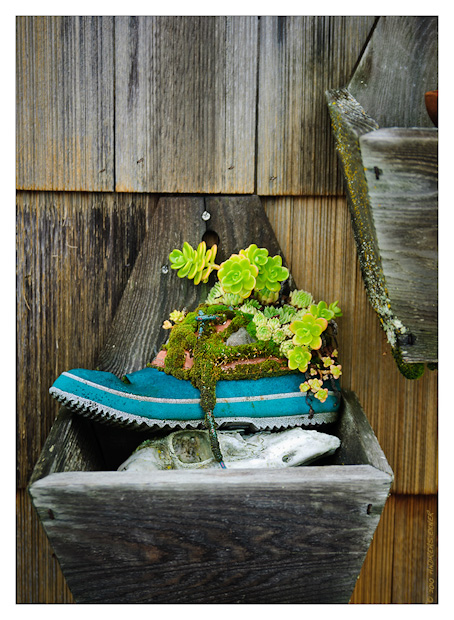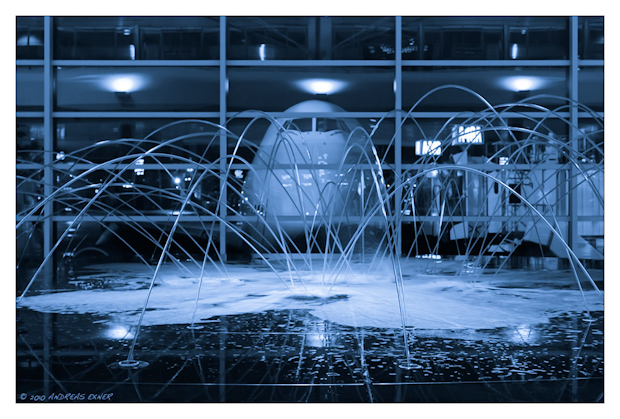Moment before winter arrived
My wife and I spent the Thanksgiving weekend near the Porcupine Mountains on the Upper Peninsula in Michigan, right at the shore of beautiful Lake Superior. Our mini vacation was marked by the final arrival of winter. This photo was taken just before a big storm that came with heavy winds and snow. It was the last time that we saw the sun. Clouds in the background, the low sun, and little icicles on a drifting log, created by the breaking waves, were the perfect ingredients for this picture. Next day the sky was covered with grey clouds, the waves were much higher, and the log was covered with frozen sand. Not nearly as nice as the evening before. I like the color version of this image too, but I believe the B/W reflects the magic of the moment better, the moment before winter arrived…
Nature clicks #12
Sometimes we are tempted too look only for the big animals, the most iconic, the most well known. This is easy, because they are always impressive. We sometimes forget about the small ones, the maybe not so gorgeous animals. But there is also a chance that we repeat things over and over again, that we take the same pictures all the time. I believe there is a good chance that we can end up with a unique and interesting shot by looking for the lesser known animals, because they are not so over-photographed as those always seen in ads of magazines or other publications.
When I watched this little Willet in the Bolsa Chica Wetlands I enjoyed it as much as the Brown Pelicans and Snowy Egrets. The perspective for this photo is not ideal. It was taken from slightly above. The access to the water is restricted for visitors and I'm all for that the protection of the bird habitat has absolute priority. I like how the reflection of waves makes for a nice background pattern. It was my first time in the Bolsa Chica Ecological Preserve but I'm sure I will go back there again. It may take some time, but one of these days I will have a really great shot of the little Willet.
Nature clicks # 11
For the first time I watched Brown Pelicans. I was totally thrilled to see these majestic birds feeding on fish in big numbers. They are a good subject to practice with the long lens when they just swim and wait for the fish. Both images were taken in the morning when the light had still a warm tone.
Nature clicks # 10
Since a long time I had the wish to do some wetland bird photography in a coastal area. I was dreaming about really good light and birds in abundance. Last weekend this dream became true. I spent a full day between sunrise and sunset at the Bolsa Chica Ecological Reserve near Huntington Beach in California.
Of course, the morning light and the warm sun light just before sunset is the best, but the relative low sun at this time of the year allowed for some good pictures at any time of the day. Let's start with an image of a Cormorant, who seemed to enjoy the morning sun the same way I did. More to come….
Last one (almost)
Perhaps because of the dry weather during the last few months the leaves have been on the ground very early this year. Except for a young oak near the house. Last night it let its red leaves shine against the setting sun. Time for another "nature click"...
Nature clicks #9
 We had gorgeous weather last weekend here in Iowa and I thought it was time to have a look how the Trumpeter Swans that I discovered in April were doing (see my earlier posts). Knowing the location much better now, I knew the late afternoon sun would illuminate their usual spot. Too make a long story short, the light was perfect and they were much closer to the shore than I had ever seen them before.
We had gorgeous weather last weekend here in Iowa and I thought it was time to have a look how the Trumpeter Swans that I discovered in April were doing (see my earlier posts). Knowing the location much better now, I knew the late afternoon sun would illuminate their usual spot. Too make a long story short, the light was perfect and they were much closer to the shore than I had ever seen them before.
During the first half hour their heads were mostly in the water in search for food. You can see the mud on their necks and heads and the water gave their dark bills a nice glare. I used the short moment in between and shot in 'continuous high speed mode' with five frames per second.
As the sun sunk deeper both swans moved toward a little island in the reeds, where I had seen them before resting at other times. They started an intensive cleaning procedure. And then it happened again. One was beating its wings in order to dry them. The wing span of the Trumpeter Swan is incredibly big, and it is so much fun to watch these majestic birds in the wild.
I used spot metering for almost all shots and I'm much more pleased with the results. This time I also had many more pictures in focus. I believe this is due to the fact that I used a gimbal head mounted on the tripod. What kind of gimbal head did I choose? I will talk about this in one of my next posts, so please stay tuned….
Blue hour on Lopez Island
It was my first time on the San Juan Islands in Washington State and I fell in love with this landscape immediately. I like how laid back and friendly most people are that live on the islands and how calm they deal with the inevitable rain, fog, and unpredictable ferry connections.
After spending a rainy day in Friday Harbor on San Juan Island we returned to our campsite on Lopez Island. The clouds finally opened up. I saw my chance for some good light and headed down to the beach at Spencer Spit.
Fog started moving in and there was almost no wind. The boats anchoring near the shore line did not move much. This allowed for longer exposure times without having them totally blurred. I kept shooting until it was totally dark and the digital noise took over…
Rubber boot
Grey clouds made me looking for the little things during our stay on the San Juan Islands in Washington State. This beautiful boot was decorating a house boat in Deer Harbor on Orcas Island. Right next to it, on another boat, is a local photographer who shows and sells his images. One of the pictures in his gallery showed of course the same rubber boot, but the image was a few years older and the plant inside was still much smaller. I'm sure almost every tourist who visits this place takes a snapshot of this original decoration. Well, I couldn't resist either…
Early flight
We missed our connection flight in Detroit the night before and got booked on an early one next morning to Portland, Oregon. I was still tired on my way to the gate but all my bells ringed when I saw the fountain with the Boing 747 behind the glass. Flash was not really an option because of the glass and the tripod was of course checked with my luggage. There was not much time to fiddle in this low light situation. I used the Carl Zeiss Distagon T* 35/f2 with manual focus. I took eight images and liked eventually the one with the plane of focus somewhere between the jets of water the best (1/5s, f5.6, ISO 250).
I felt that the color version didn't really reflect what I had in mind when the image was captured. I tried different things, including B&W conversion, and ended up with an ocean blue split tone that creates a cool "early morning" effect. I used a preset in Adobe Lightroom that I got some time ago from Matt Kloskowski's blog Lightroom Killertips.












